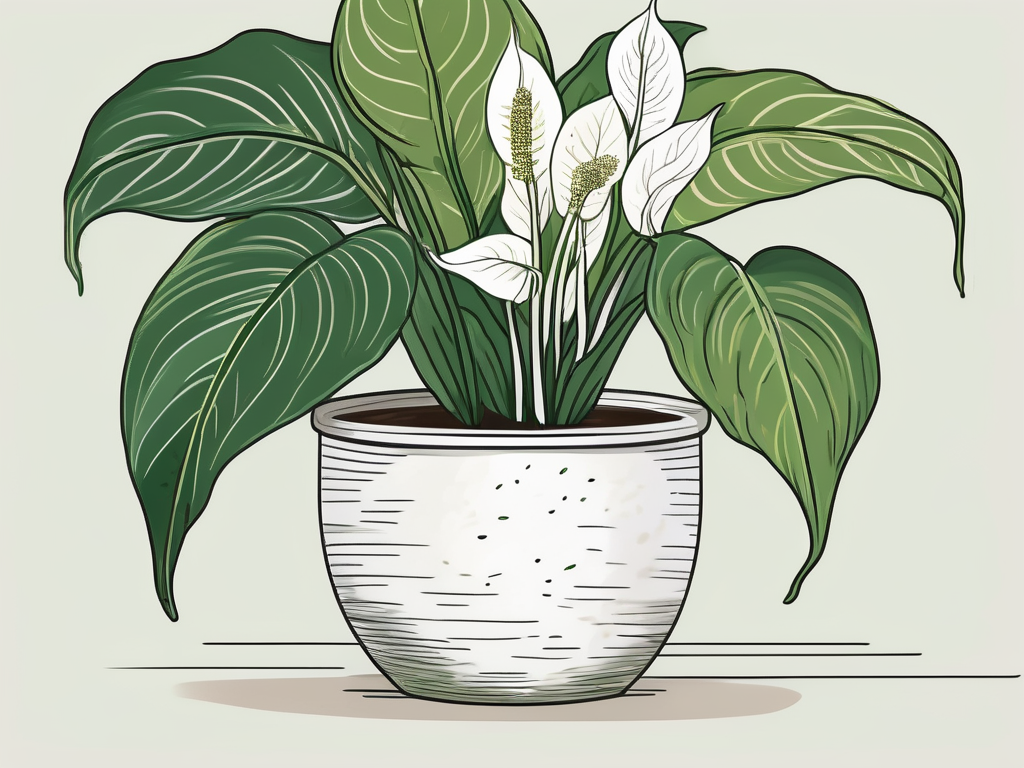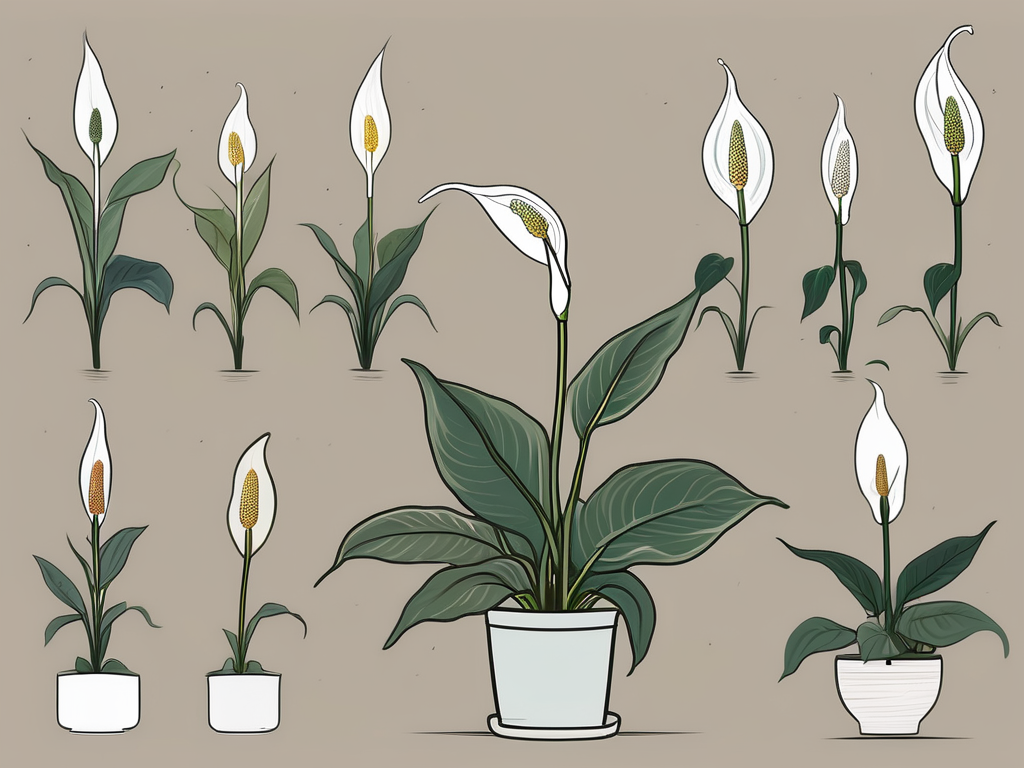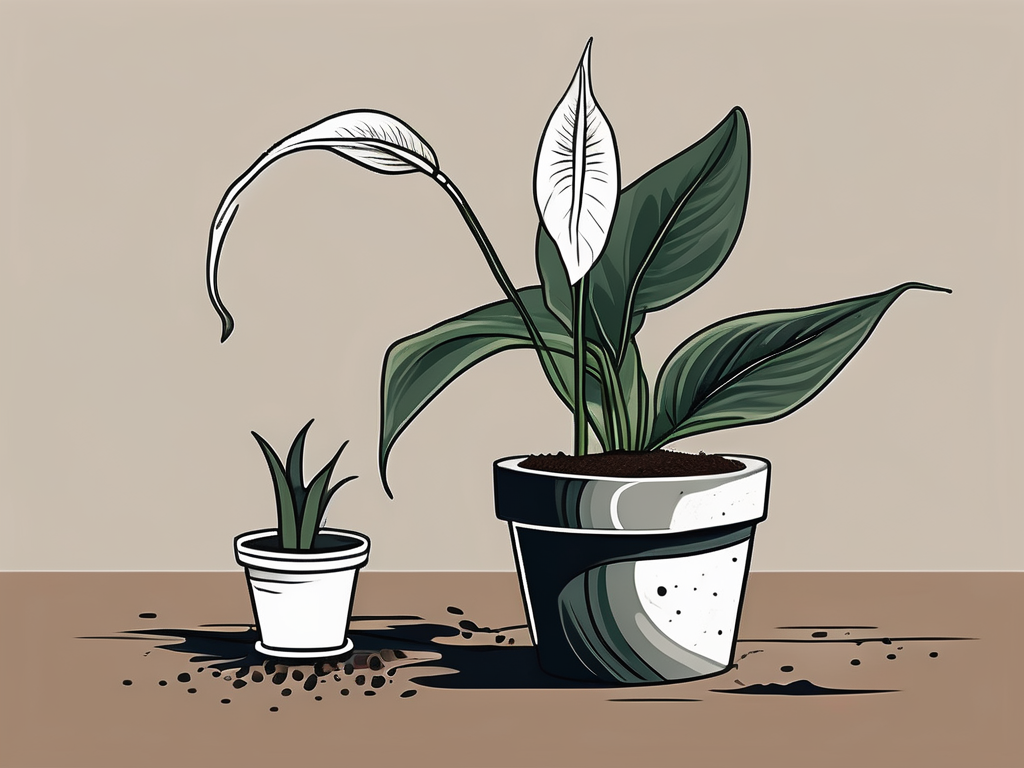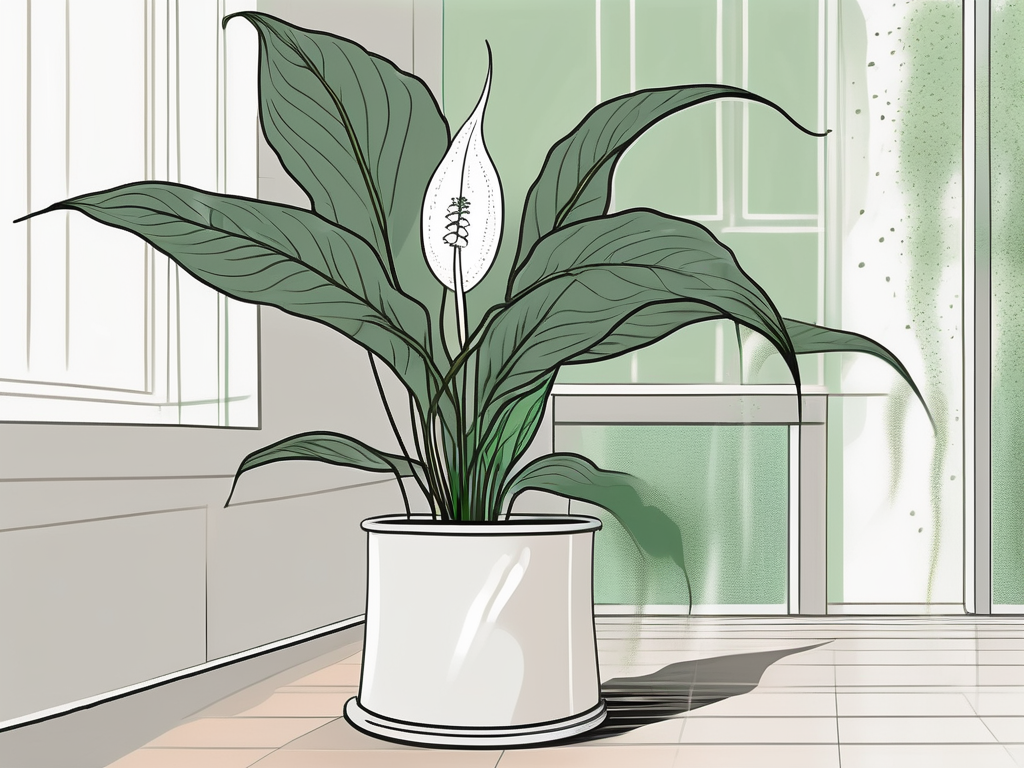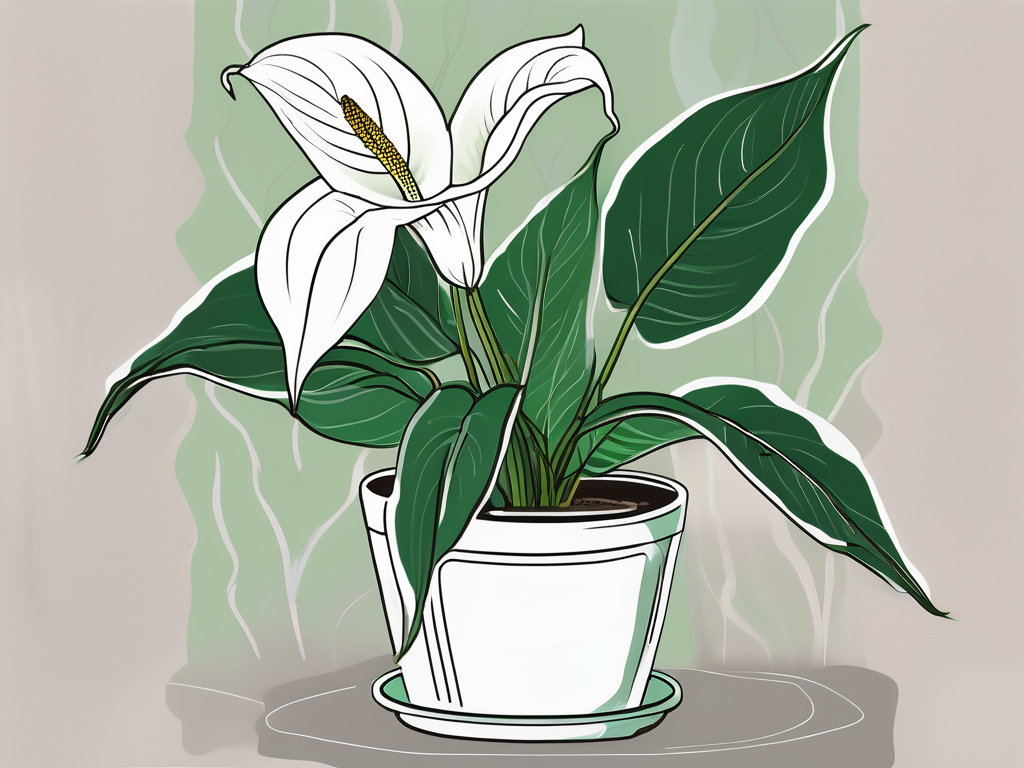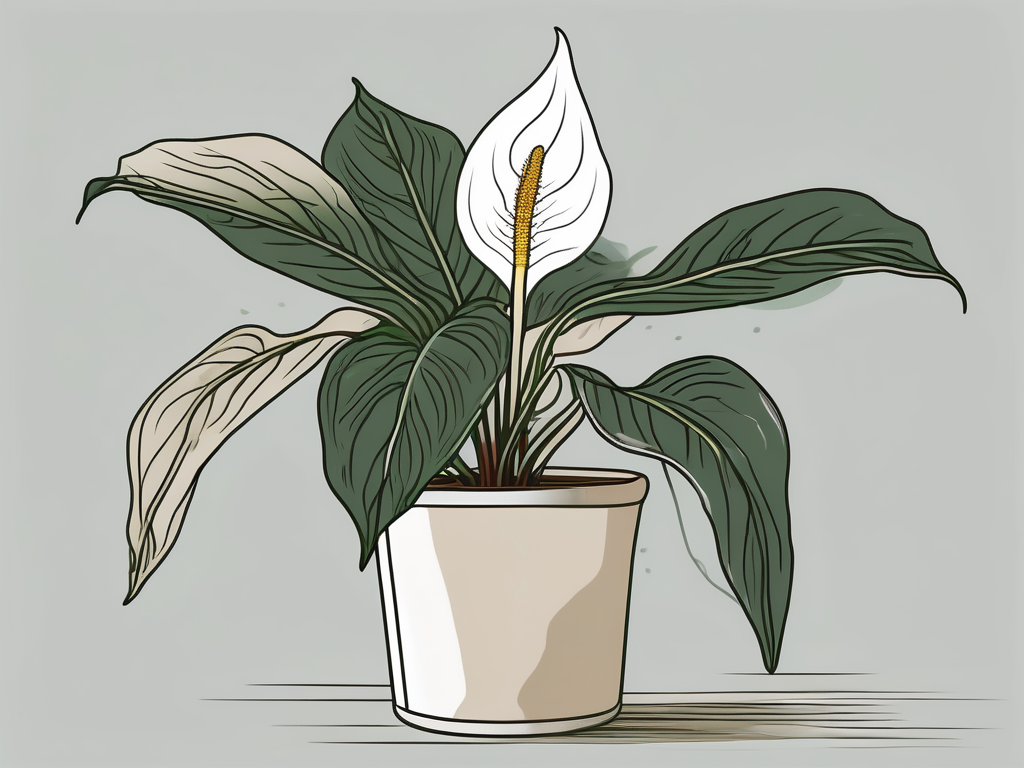
Peace lilies, with their graceful white blooms and lush green leaves, are a favorite among houseplant lovers. They're not just pretty faces; these plants are also known for their air-purifying abilities, making them a great addition to any home. However, like any plant, peace lilies can have their share of challenges, especially when it comes to their leaves.
In this article, we're going to chat about everything you need to know to keep your peace lily leaves looking their best. We'll cover how to care for them, common issues you might encounter, and some handy tips for troubleshooting. Whether you're a seasoned plant parent or just starting out, there's something here for everyone.
Understanding Peace Lily Leaves
Let's start with a little background on peace lily leaves. These leaves are not just there for show; they play a crucial role in the plant's health. They help with photosynthesis, the process by which plants convert light into energy. So, keeping them in top condition is essential for the overall well-being of your peace lily.
The leaves of a peace lily are typically a vibrant green, and they have a smooth, slightly glossy texture. They're quite broad, which gives the plant its lush appearance. This broadness also makes them efficient at absorbing light, a feature that helps them thrive even in lower-light conditions. However, this doesn't mean they should be kept in the dark—more on that later.
Interestingly enough, peace lily leaves are also sensitive to environmental changes. This sensitivity can manifest as browning tips, drooping, or yellowing. Understanding what your plant is trying to tell you through its leaves is a skill that can greatly improve your plant care routine.
Ideal Light Conditions
Light is one of the most important factors for the health of peace lily leaves. While peace lilies are famous for their ability to survive in low-light conditions, they still need some light to thrive. Think of it as the difference between surviving and thriving.
The ideal spot for a peace lily is somewhere with bright, indirect light. Direct sunlight can be too harsh and might scorch the leaves, leading to those unsightly brown tips. On the other hand, too little light can result in fewer blooms and slower growth, leaving your peace lily looking a bit sad.
If you're unsure about the lighting in your home, a good test is to place your hand between the plant and the light source. If your hand casts a distinct shadow but the edges are a bit blurry, it's likely a good spot. If there’s no shadow at all, it might be too dark, and if the shadow is sharp and well-defined, it could be too bright.
Watering Peace Lily Leaves
Watering is one of the trickiest parts of plant care, and peace lilies are no exception. These plants like their soil to be consistently moist but not soggy. Overwatering or underwatering can both lead to problems with the leaves.
One tell-tale sign of overwatering is yellowing leaves. If the leaves look yellow and feel soft, you might be watering too much. On the flip side, if the leaves are drooping and look wilted, they might need a drink. Peace lilies are pretty good at communicating their thirst—when they're thirsty, the leaves will droop dramatically, almost like they're fainting. But don't worry, a good drink of water will get them perky again in no time.
To water your peace lily, it's best to use room-temperature water and water the plant thoroughly, allowing excess water to drain out of the bottom. It's crucial to have a pot with drainage holes to prevent water from sitting in the soil, which can lead to root rot.
Humidity Needs
Peace lilies hail from tropical regions, so they love a bit of humidity. If your home is particularly dry, especially in the winter months, your peace lily might show signs of stress, like brown leaf tips.
There are a few ways to boost humidity around your plant:
- Grouping plants together: Plants naturally release moisture into the air, so having them close can create a more humid microclimate.
- Using a humidity tray: Place your plant pot on a tray filled with pebbles and water. As the water evaporates, it increases the humidity around the plant.
- Misting: Lightly misting the leaves can help, but be careful not to overdo it as constantly wet leaves can lead to fungal issues.
Understanding Nutrient Needs
Like any living organism, peace lilies need nutrients to grow. While they don't require a lot of fertilizing, giving them a little boost during the growing season can keep those leaves vibrant and healthy.
A balanced, water-soluble fertilizer is usually a good choice. Apply it every six to eight weeks during the spring and summer months. Be cautious not to over-fertilize, as this can cause more harm than good. Signs of over-fertilization include brown leaf tips and a crusty, white build-up on the soil surface.
If you're ever in doubt, it's better to err on the side of caution and fertilize less. Peace lilies are relatively low-maintenance when it comes to feeding, so a little goes a long way.
Pruning and Cleaning
Pruning your peace lily is a great way to encourage new growth and keep the plant tidy. If you notice any yellow, brown, or otherwise unhealthy leaves, it's a good idea to remove them. This not only improves the plant's appearance but also prevents any potential diseases from spreading.
To prune, use a pair of clean, sharp scissors or pruning shears. Cut the leaf stem as close to the base of the plant as possible without damaging the surrounding leaves. Regular pruning will help your peace lily focus its energy on producing new, healthy leaves and blooms.
In addition to pruning, cleaning the leaves is important. Dust can accumulate on the broad leaves, blocking light and hindering photosynthesis. A gentle wipe with a damp cloth every few weeks should do the trick. This not only helps the plant but also gives you a chance to inspect the leaves for any signs of pests or disease.
Common Leaf Problems and Solutions
Sometimes, despite your best efforts, your peace lily might run into some leaf issues. Here are a few common problems and how to address them:
Brown Tips
Brown tips can be caused by several factors, including low humidity, over-fertilization, or inconsistent watering. To fix this:
- Increase humidity around the plant.
- Check your fertilizing schedule and cut back if needed.
- Ensure you're watering consistently and not letting the soil dry out completely.
Yellow Leaves
Yellow leaves often indicate overwatering. If you notice this, reduce the frequency of watering and ensure the pot has proper drainage.
Drooping Leaves
This is usually a sign of thirst. Give your peace lily a good drink, and it should perk up within a few hours. If not, check the soil moisture to ensure it's not a drainage issue.
Dealing with Pests
While peace lilies are generally resilient, they can occasionally fall victim to pests such as spider mites, aphids, or mealybugs. These pests can damage the leaves, so it's important to catch them early.
Regularly inspecting your peace lily's leaves can help you catch any pest problems before they get out of hand. If you do spot pests, here's what you can do:
- Spider mites: These tiny pests can be tough to see, but they leave fine webbing on the leaves. Wipe them off with a damp cloth and increase humidity, as spider mites thrive in dry conditions.
- Aphids: These small, pear-shaped insects can usually be washed off with a strong stream of water. For heavier infestations, insecticidal soap can be effective.
- Mealybugs: Look for cotton-like masses on the leaves or stems. You can dab them with a cotton swab soaked in alcohol to remove them.
Repotting Your Peace Lily
Over time, your peace lily may outgrow its pot, leading to root-bound conditions that can affect leaf health. Repotting is a great way to give your plant a fresh start.
Signs that your peace lily needs repotting include roots growing out of the drainage holes, slow growth, or the plant becoming top-heavy and tipping over. When repotting, choose a pot that's one to two inches larger in diameter than the current one and use a well-draining potting mix.
Gently remove the plant from its current pot, loosening any tightly bound roots. Place it in the new pot, fill with fresh soil, and water thoroughly. Repotting is best done in the spring when the plant is entering its active growth phase.
Creating a Plant-Friendly Home Environment
Peace lilies not only enhance the beauty of your home but also contribute to a healthier living environment by purifying the air. To make your home even more welcoming for your peace lily, consider these tips:
- Temperature: Keep your peace lily in a consistent temperature range between 65-85°F. Avoid placing it near drafty windows or heat sources.
- Placement: Find a spot where it can enjoy bright, indirect light. Consider rotating the plant occasionally to ensure even growth.
- Companion plants: Pair your peace lily with other houseplants that have similar care requirements, such as pothos or snake plants, to create a cohesive plant display.
Final Thoughts
Peace lilies are a joy to have around, offering beauty and benefits to any plant lover's home. By understanding the needs of their leaves and addressing any issues promptly, you can keep your peace lily thriving.
Here at Cafe Planta, we're passionate about helping you care for your plants. Whether you're looking for new plant additions or need advice, we're here for you. Don't hesitate to email us or drop us a message on Instagram. Let's keep growing together!














